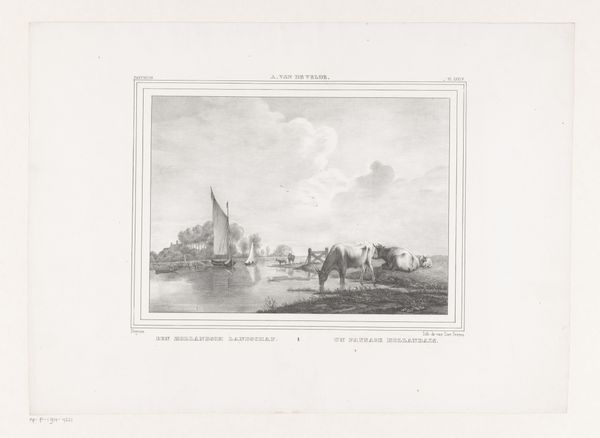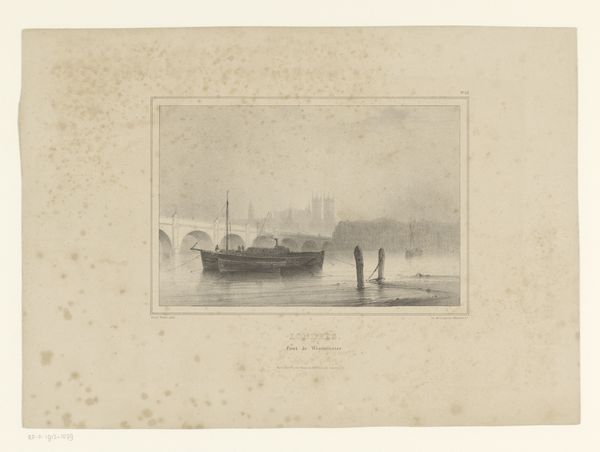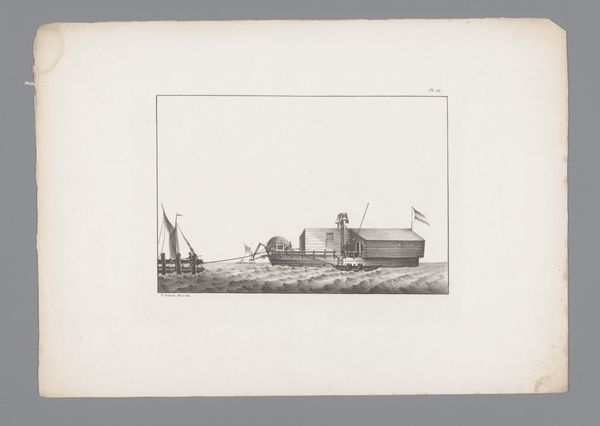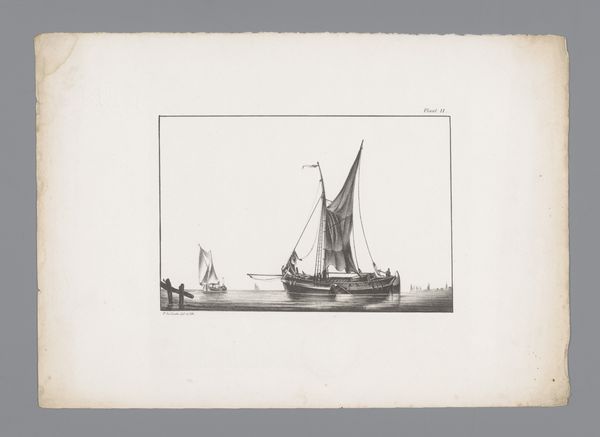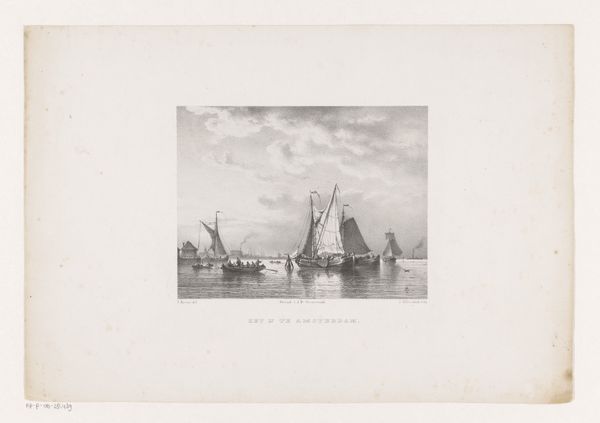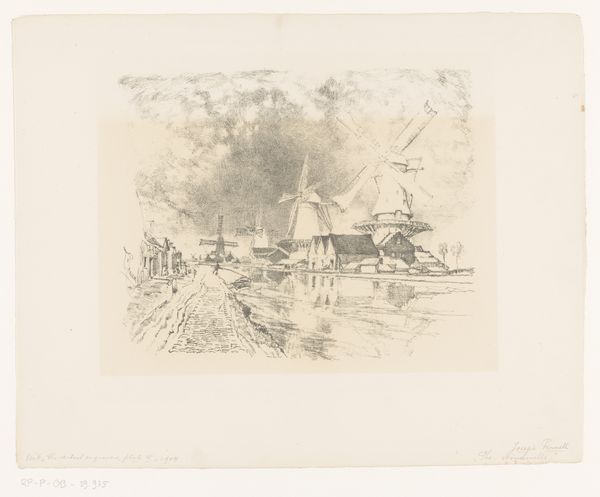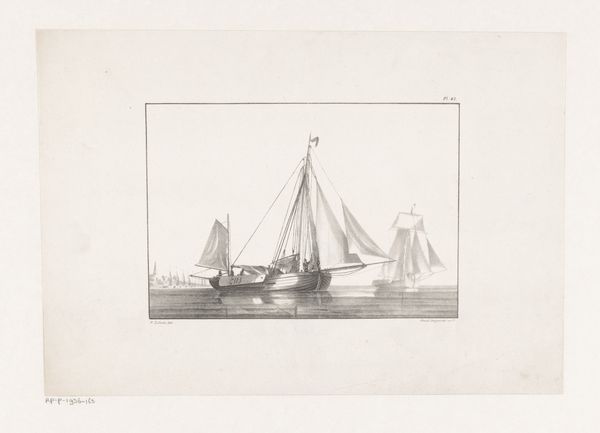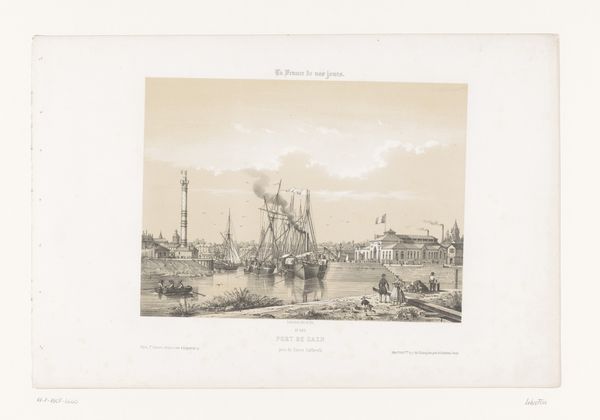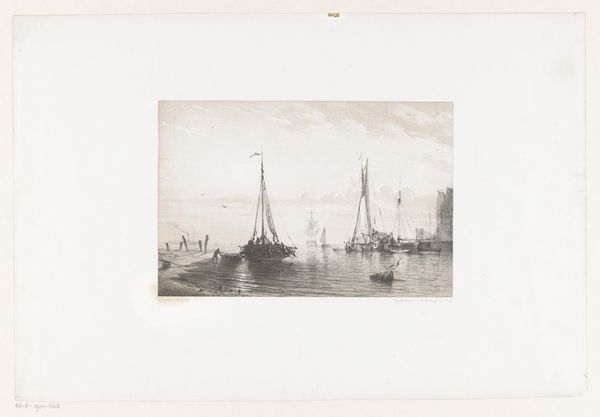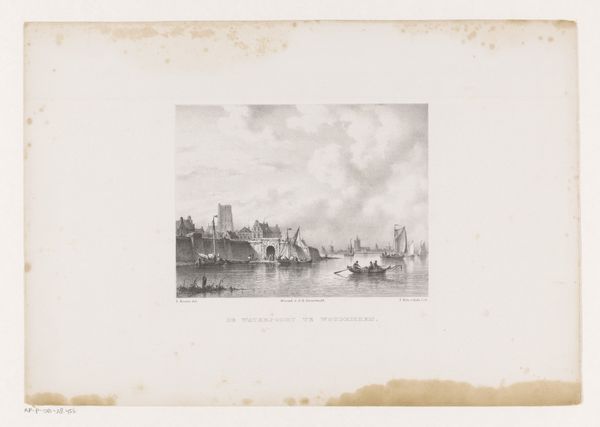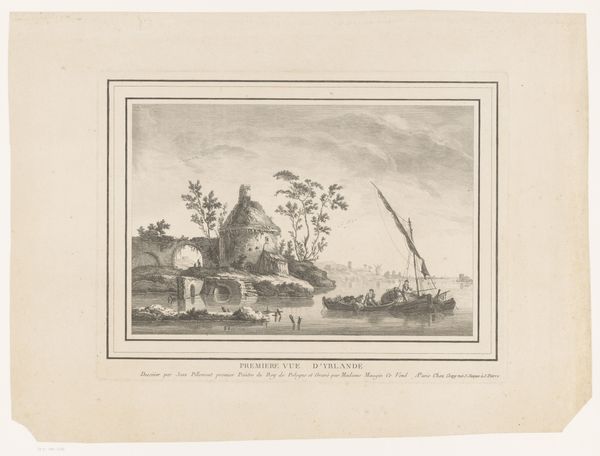
Vracht- en vissersschepen op het Canal de Belgique 1832 - 1840
0:00
0:00
drawing, paper, ink
#
drawing
#
aged paper
#
toned paper
#
ink paper printed
#
sketch book
#
landscape
#
paper
#
personal sketchbook
#
ink
#
romanticism
#
ink colored
#
sketchbook drawing
#
watercolour illustration
#
genre-painting
#
sketchbook art
#
watercolor
Dimensions: height 271 mm, width 355 mm
Copyright: Rijks Museum: Open Domain
Curator: Here we have "Vracht- en vissersschepen op het Canal de Belgique," or "Freight and Fishing Ships on the Canal de Belgique," a drawing by Eugène Modeste Edmond Lepoittevin, made between 1832 and 1840. It's currently held at the Rijksmuseum. Editor: My first impression is a kind of subdued tranquility. The tones are soft, almost melancholic, despite the bustle of the ships. Curator: Absolutely. The use of ink and watercolor on toned paper really enhances that atmosphere. The paper itself seems aged, adding to the historical weight. Lepoittevin's technique lends itself well to the Romantic aesthetic, emphasizing feeling over rigid representation. Think of the canal itself, a waterway that signifies trade, movement, but also connection. Editor: I’m particularly interested in the materiality of the boats themselves, the construction evident even in this quick sketch. These were working vessels, not pristine displays. Notice how Lepoittevin suggests the weight and density of the hulls. This wasn't just about aesthetic beauty; it was about the daily toil associated with maritime commerce. You can imagine the workers, their labour imprinted on the very wood and rope of these vessels. Curator: Indeed, and these ships served as vital arteries of 19th-century commerce, bringing goods and resources to different areas. This vista, viewed through a lens of romanticism, does seem more concerned with capturing an atmosphere that mirrors that time than giving an itemized portrayal of each plank and rope. Editor: Still, look at the wear and tear implied by those hasty lines! I feel a kind of connection to the working people who built and manned these ships. The composition gives a snapshot of this connection to materials and labor. Even this sketchbook drawing preserves information regarding social history. Curator: That is a powerful observation. And perhaps that is where the symbol and reality intersect. While the medium itself can imply the work and time of those that it portrays, it is worth asking: why choose that scene, that moment in that spot to encapsulate those themes. Editor: It shows us how so much more information beyond the image exists. A discussion, if you will. Curator: Well put. Thank you. Editor: Thank you.
Comments
No comments
Be the first to comment and join the conversation on the ultimate creative platform.
